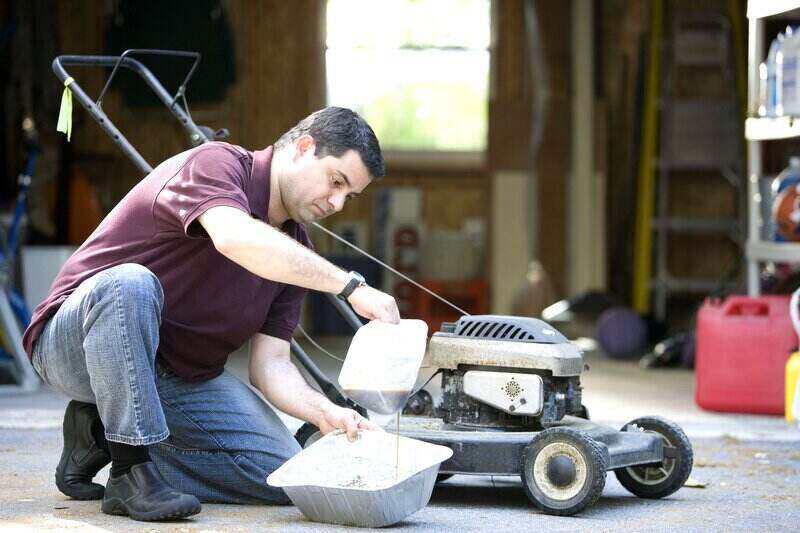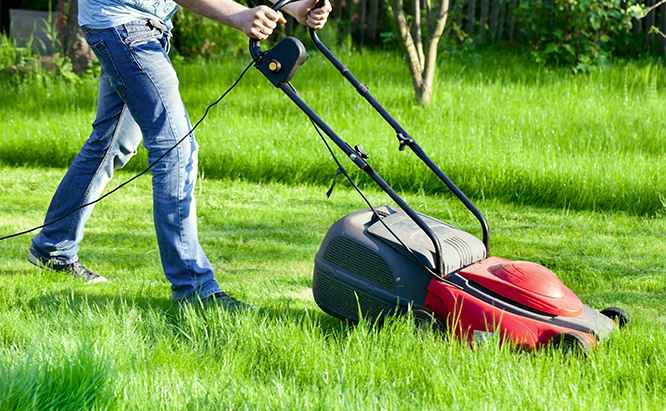A maintenance-free lawn doesn’t exist in North Texas. That’s the first thing to keep in mind when you think about your yard in Dallas or Plano or Irving. Because the growing season is so long, you’ll be putting work into your yard long after homeowners in cooler climates have put away the mower. Here are some tips to lawn mowing and maintenance in North Texas.
Contents:
Mowing
The key here is not to “scalp” your grass, meaning cut it too short. Scalping lets precious water evaporate more quickly in the Texas heat. It also stresses your grass, leaving it vulnerable to diseases and pests. Your lawn is most likely a warm-season variety like St. Augustinegrass, Zoysia grass, buffalograss or Bermudagrass. Your proper grass length depends on the variety you have.
Experts recommend St. Augustine be cut 2 to 2.5 inches tall. The recommended height for common Bermuda is 1.25 to 1.5 inches tall. Zoysias should be between 2 to 3 inches tall, and buffalograss is the longest, with a recommended height of 3 to 4 inches. Look to mow the lawn about once a week during the hot season. Pro tip: mow in a different direction each time. This helps the blades of the grass stand up straight and prevent ruts. The grass will most likely be dormant from about November to early March.
Leave the Clippings
Don’t bag those clippings. The clippings add vital nutrients back into the soil as they decompose. As long as you mow at the proper height, the clippings will break down quickly.
Maintain Your Mower

Sharpen the blades, change the oil and spark plugs once a year. Dull blades will tear the grass instead of cutting it, leaving it susceptible to disease and pests.
Weed and Feed
Some make a ritual out of applying weed and feed to their lawns every Super Bowl Sunday in February. This counts as “early spring” in Texas, and the grass is beginning to green up. That’s when you need to fertilize your lawn. The rule of thumb is generally between February and April. This is also the time to stop weeds in their tracks — before they ever get a firm root in your yard. You can also find weed and feed mixtures that contain fire ant killer, to keep the nasty little insects from digging up mounds of dirt in your lawn and biting you.
Watering
Your lawn needs a good long drink every five to ten days, generally. Keep that in mind before you overwater the grass. Also, your city probably has ordinances or recommendations on what days you can water and what time. Use your sprinkler two times a week, and don’t water between 10 am and 6 pm. In most cases, drip irrigation, soaker hoses, and hand watering are allowed any day of the week. Ideally, you water early in the morning — giving your grass a good drink of water, but allowing the droplets on the blades to evaporate over the daytime hours. This lowers your lawn’s risk of fungus problems.
The key to a lush, green lawn in north Texas is consistency over the course of the long, hot growing season. If you begin tending to it on a regular basis when it first begins to green, and maintain it through the triple-digit temperatures of the summer, and into the fall, it will reward you with beautiful, emerald green grass.
FAQ
1. Will a cool-season grass survive in north Texas?
Yes. Kentucky bluegrass, ryegrass, and tall fescue will grow better in fall and winter, but they will survive a north Texas summer. Cool-season grasses are not recommended further south where it gets much warmer.
2. Are some grass types more shade-tolerant than others?
Yes. St. Augustinegrass, Zoysiagrass, and centipedegrass are the most shade tolerant warm season grasses for the Dallas area.
3. Is it possible to keep a green lawn year-round in Dallas?
Yes. Southern blue is a hybrid turf that mixes Texas bluegrass with Kentucky bluegrass and stays green even in winter. This cool-season grass is also drought-resistant and does well in the shade. Southern blue is not recommended by south Texas.
Need help mowing and maintaining your lawn? We can help you to find a lawn care or landscaping pro near you.

